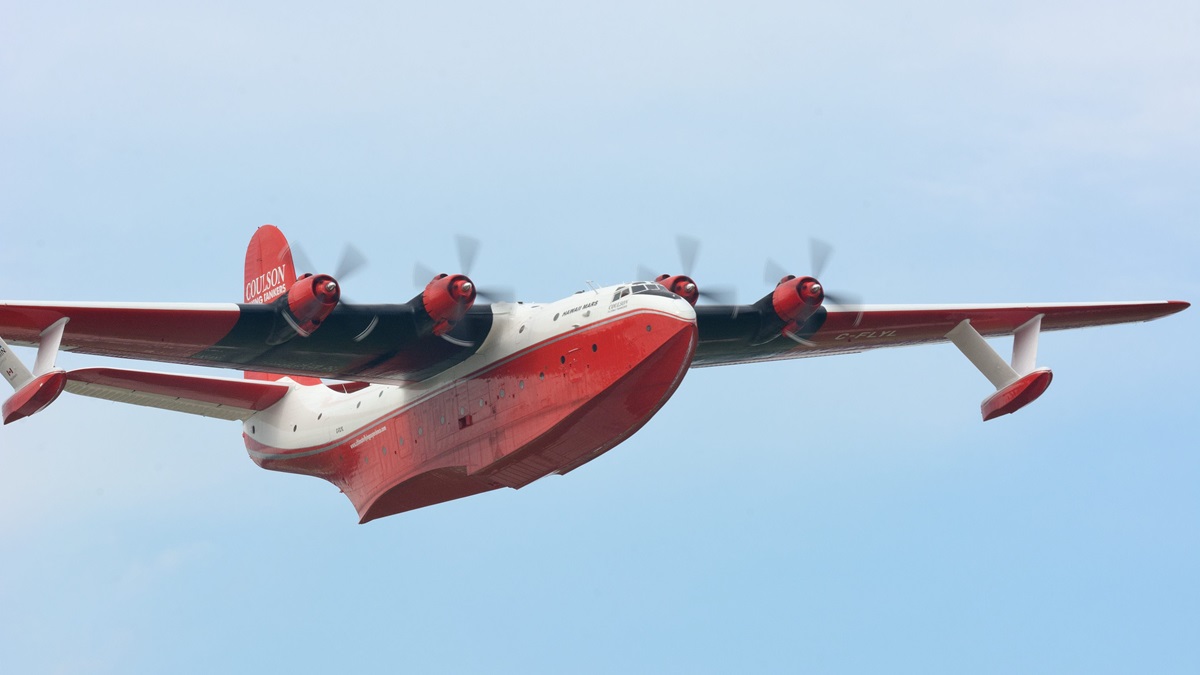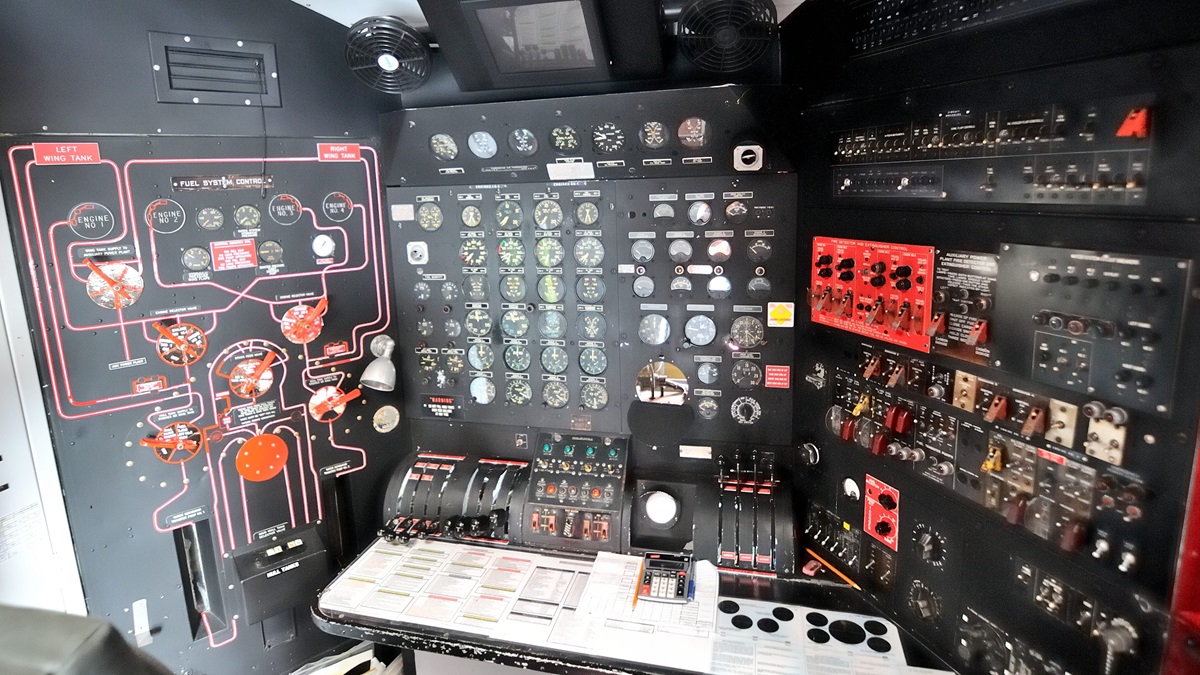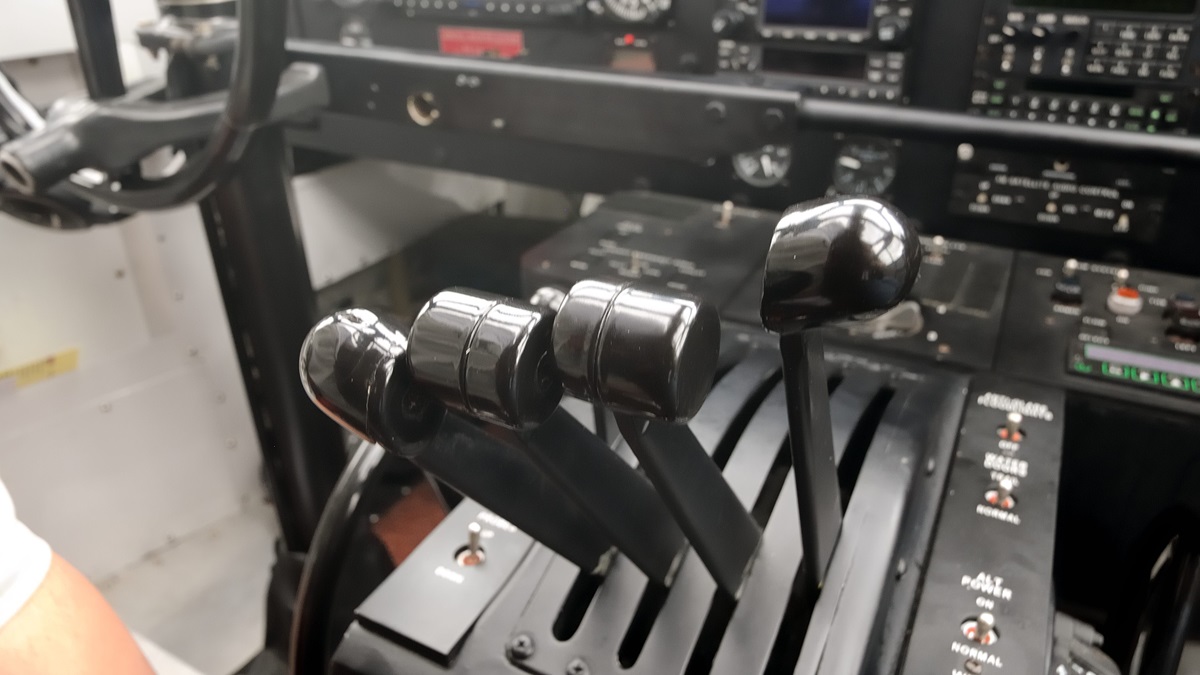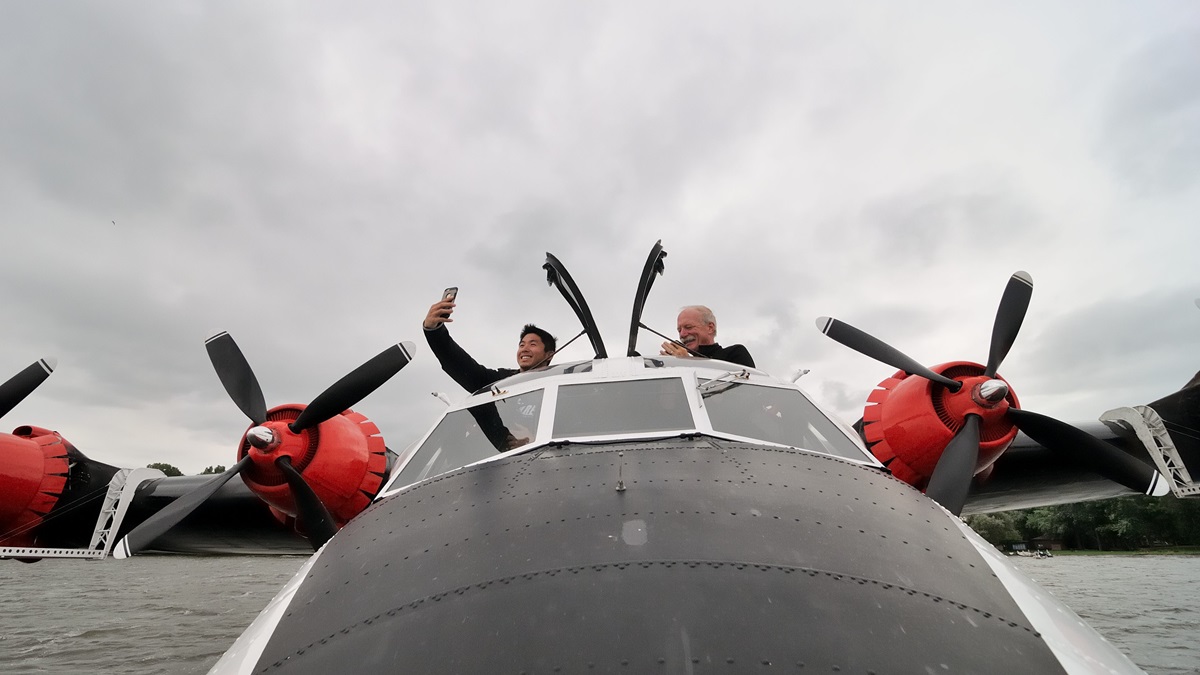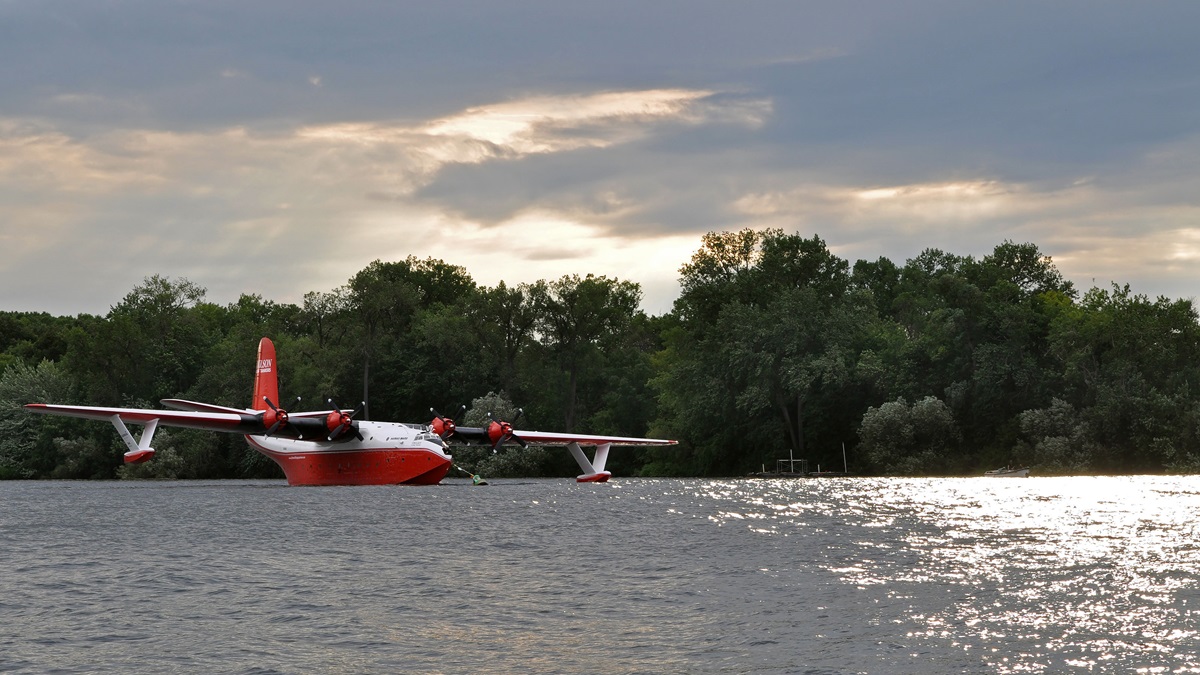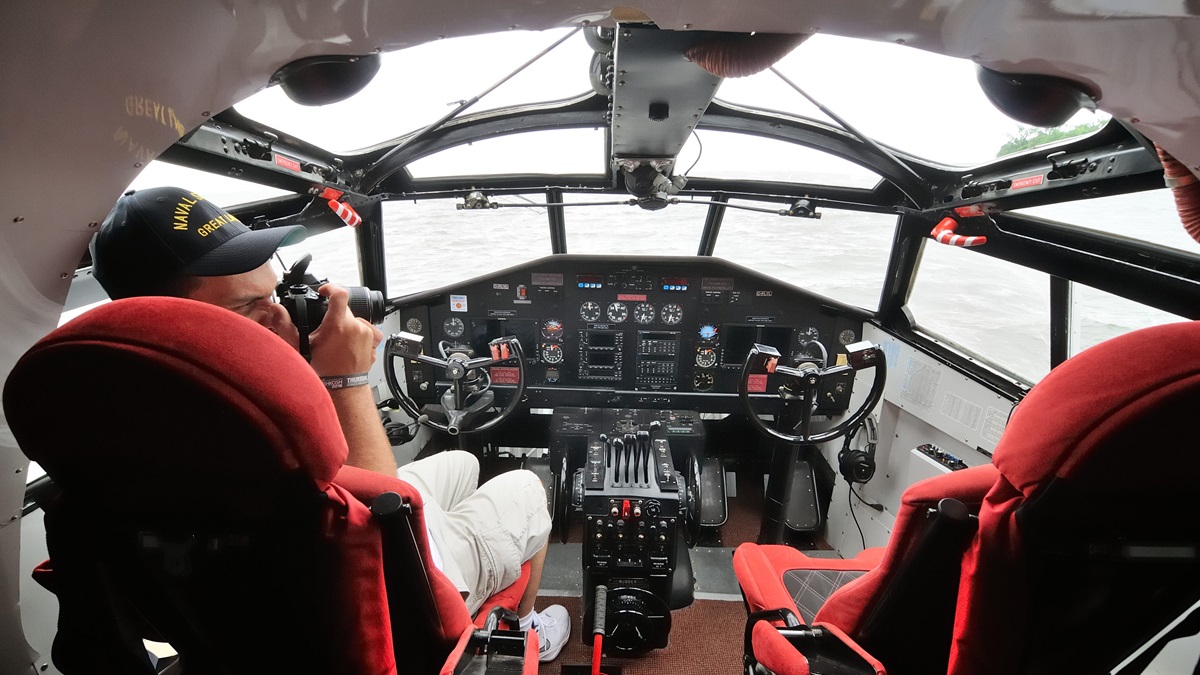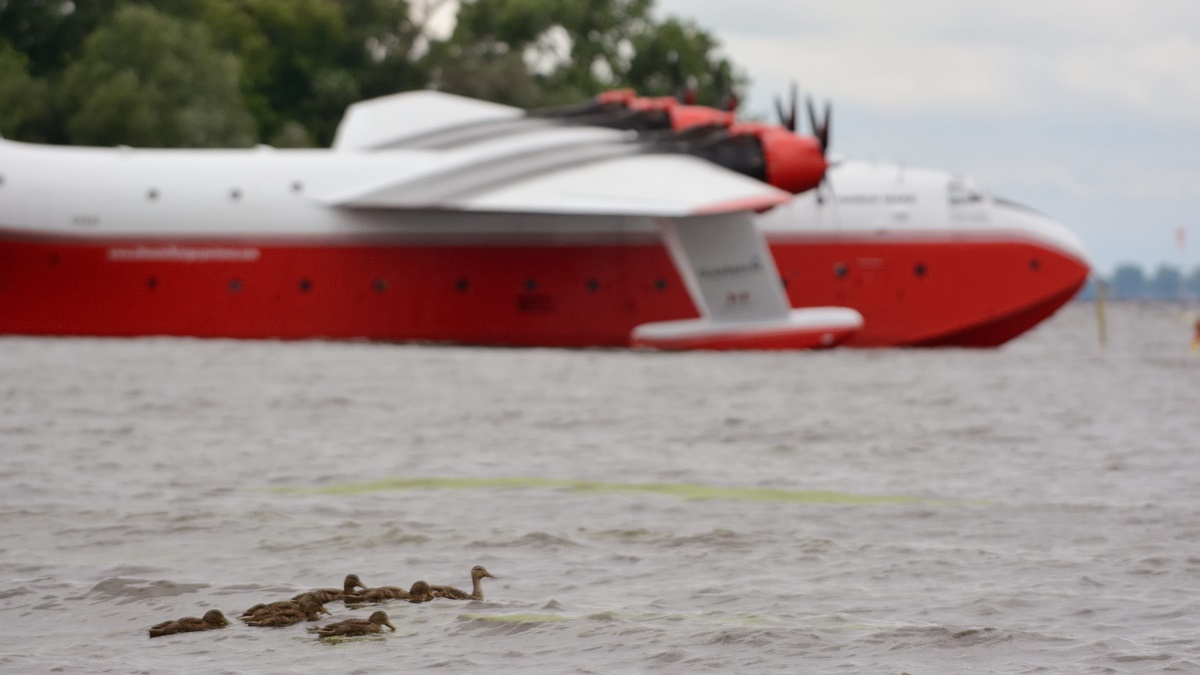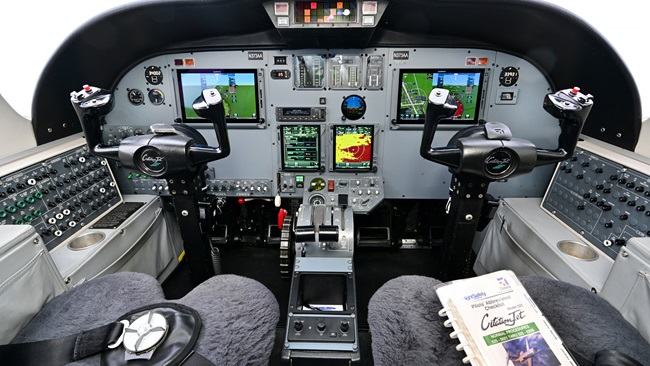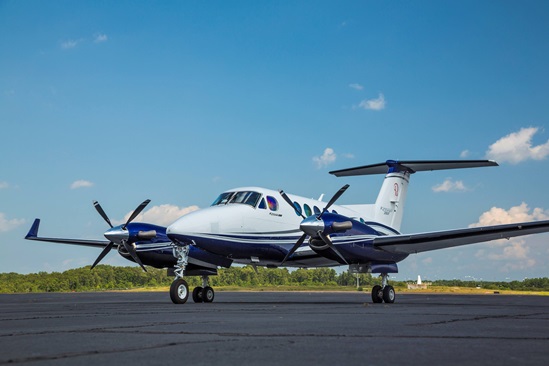Meet the Mars
Giant Martin flying boat makes first AirVenture visit
Only six were built for the U.S. Navy, late in World War II; they were retired in 1958. In the early 1960s, the remaining four aircraft were purchased by a consortium of Canadian timber companies for conversion to water bombers, to fight fires in their coastal forests. One of the four crashed, and another was destroyed in a hurricane. Coulson Flying Tankers bought the last two in 2007. Named by manufacturer Martin, the Hawaii Mars has been updated with a glass cockpit, and made its first-ever visit to EAA AirVenture this week. The Philippine Mars is maintained in an almost-airworthy condition by Coulson at its base in Port Alberni, British Columbia.
Today the historic aircraft have no firefighting work, and while Coulson would like to see them go to museums, both are considered to be for sale.
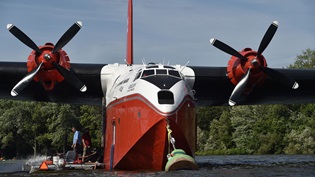
Because the Martin Mars is a true flying boat, it has no landing gear and cannot land at Wittman Regional Airport. Instead, it is moored near the EAA Seaplane Base on Lake Winnebago, a few miles southeast of the main fly-in grounds. Coulson Flying Tankers is selling tours of the giant aircraft, and it has flown in two airshows already this week. It is scheduled to fly again Friday afternoon and Saturday evening. The Mars crew plans to depart Monday for their return to Canada.
In addition, the company is offering pilots the opportunity to fly the historic aircraft. “The Martin Mars aircraft are truly amazing pieces of World War II history. These aircraft hold numerous world records during this era, and before they are retired, we are offering aviation enthusiasts a chance to fly this incredible piece of aviation history,” Coulson said.
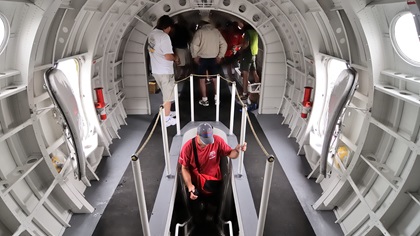
Coulson’s company has been training Chinese test pilots in Canada, helping prepare them to fly the new TA-600 amphibious aircraft now being built in China by the Aviation Industry Corp. of China. The pilots from China are training in Coulson’s Hawaii Mars aircraft, taxiing and flying the large flying boat in preparation for flying the new Chinese design, which will have a 3,000-gallon water capacity and is powered by four turboprop engines.
As water bombers—the Mars’ No. 3 and No. 4 fuel tanks were converted to carry water scooped from a lake—they can carry 7,200 gallons of water. It’s scooped at a rate of one ton per second, and the airplane takes 30 seconds to load, explained Charlie Watts, who works for Coulson as a flight engineer on its C-130 tankers. “You can feel it when the probes go down” to scoop water, because the Mars pitches forward, he said. Foam or gel fire suppressants can be injected into the water as it is loaded, depending on what is needed for the fire.
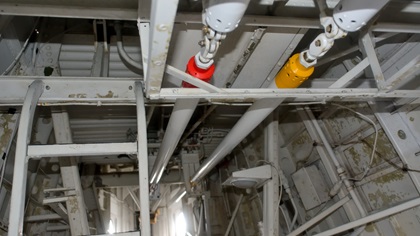
A tour of the aircraft reveals its nautical heritage. To most pilots, the structure resembles a boat more than an airplane. Hatches and their mechanisms are very nautical in appearance, as are the stairways between decks. The rudder and elevator are controlled by massive push rods extending from the cockpit, and those controls are locked using pins from inside the seaplane’s hull. Ingeniously, those pins are used as keys to interlock those control surfaces to the flight controls—preventing takeoff when the controls are locked.
Many Coulson employees have been surprised by the interest shown in the Hawaii Mars at AirVenture—the giant seaplane’s first-ever airshow. “The interest is almost surprising, but it really shouldn’t be,” said Dev Salkeld, a flight engineer on the Mars. “You come to a place like this and there are a lot of aviation enthusiasts.”
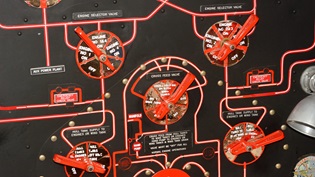
The aircraft flew nonstop from Port Alberni to Oshkosh. The trip took nine hours, including a diversion around some weather. It burns about 420 gph in cruise flight, but that increases to 780 gph at maximum power—often the case during firefighting missions.
The Mars is moored to a 12,000-pound anchor in Lake Winnebago; for fueling, it’s moved to another buoy closer to shore, and a hose is floated out to the aircraft. Fuel is then pumped from a tanker truck on the shore. “It takes a while to fuel,” one crewman said. “We usually use our own truck, and it has a faster pump.”

